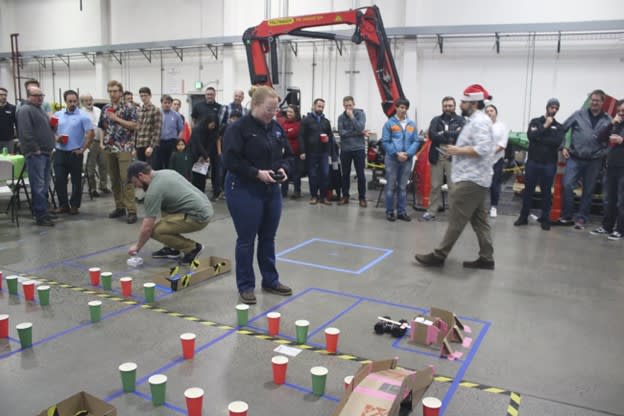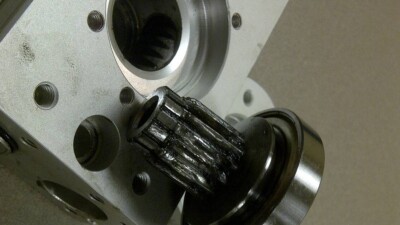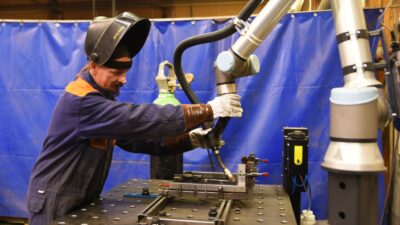Engineers who design DCS, PLC, and SCADA tech can expect job security

The demand for industrial automation is expected to grow by 9.3% per year to reach USD $307.7 billion[1] in 2030, a significant increase from the 2023 value of USD $165.1 billion. The data from Persistence Market Research, a New York-based research firm, show a great deal of the technological development in industrial automation is occurring in North America. The region represents 35% of the global market. North America is also home to the world’s largest industrial automation and control systems.
Engineers in industrial automation are being requested to create and refine a wide range of systems, including robots, distributed control systems[2] (DCSs), programmable logic controllers (PLCs), and Supervisory Control and Data Acquisition (SCADA) technologies. Engineers are also tasked with partnering with IT professionals to create cybersecurity systems to protect the systems. The demand for industrial automation comes from multiple sectors, with manufacturing being the largest field, at over 30% of the market.
Other industries hiring engineers in industrial automation include oil and gas, at over 20% of the market, and power generation, at over 15% of the market. Water and wastewater treatment, pharmaceuticals, food and beverage, agriculture, and chemicals hire engineers in industrial automation as well. Positions in power generation in particular involve planning for and handling emergencies like blackouts. As a result, employers[3] value candidates with experience in working calmly under pressure.
Manufacturers see industrial automation as one tool to overcome shortages of raw material and labor. The idea is that industrial automation will reduce the impact of supply chain disruptions caused by political conflicts like the war in Ukraine. This war alone has significantly pushed up steel[4] and energy[5] prices.
Industrial automation solutions are also in demand because manufacturers see them as a path to bulk up financial reserves. This helps them prepare for natural disasters and public health emergencies. The initial months of the COVID-19 pandemic were a difficult lesson. Many manufacturers are still struggling to find financial footing, especially in the Asia Pacific region[6] . Another reason that manufacturers are in favor of industrial automation is because they see it as a way to hedge against inflation. Price increases slowed in the winter of 2024 but are still increasing. The U.S. consumer price index alone indicates that between 2023 and 2024, there was a 3.1%[7] price increase.
Mining and metals industry is critical to increase sustainability
The mining and metals industry[8] is the second-biggest leading market for industrial automation. This is largely because work in this sector is complex and dangerous[9] . Solutions like autonomous vehicles in mines help lower accident and death rates.
The mining and metals industry is also interested in industrial automation because it presents a way to develop greener practices. The changes help companies lower costs and reduce impacts on the natural environment.
For example, remote autonomous operations have the potential to minimize noise and light pollution in deep sea mining operations[10] . If robots engage in tasks like extraction, then the work will require less overall energy, resources, and waste management than manned missions. The success of the mining and metals industry is key to encouraging manufacturers in other sectors to achieve net zero[11] . Currently, many types of manufacturers building or requesting clean energy vehicles and related technologies need high amounts of transition metals, like copper.
Desirable technologies to facilitate industrial automation typically include autonomous vehicles and machinery and machinery and software programs to optimize yield and reduce risk. Digital twins to predict outcomes and maintenance are necessary as well. They indicate the shortfalls that may occur and suggest solutions prior to excavation and extraction.
An exercise conducted by Weir Group, a Glasgow-headquartered mining technology company, reveals how the improvement of existing mines[12] could increase industrial automation. In 2023[13] , Weir focused its annual team-building exercise on autonomous hauling. The company had over 100 engineers across North America, Asia, and Australia use remote-controlled cars to simulate driving a haul truck to pick up blasted ore from a mine.
The challenge resulted in teams customizing their RC cars in different ways. Changes included adding truck beds to carry ore to a delivery spot and building unique push blades and forklift-type tines to move materials. The exercise indicated possible real-world solutions for ore retrieval.
Also last year, Weir released a study that focused on comminution, the process of crushing large rocks into small particles to assist with exposing minerals in the rocks. The basic comminution process has not changed significantly for decades. This process, which is already electrified, uses at least one third of the energy in the average mine.
The study indicated that replacing conventional technology for comminution with new solutions could reduce energy use by 40% and decrease 50% of CO2 emissions. New solutions will also offer the advantage of using less water.
The creative energy that Weir fostered has the power to help its engineers understand the potential of new innovations. The next step for the company is to promote internal collaboration among engineers and increase communication with customers to develop and refine automation solutions comminution and other mining processes.
Government support, advances in wireless technology are beneficial
Government support in the form of grants, fee waivers, new research parks, and research assistance motivates manufacturers to continue to develop industrial automation. Results can include a higher usage of autonomous vehicles and procedures. They can also take the form of executive directives to achieve sustainability goals more quickly.
For example, in Canada, the National Research Council of Canada Industrial Research Assistance Program[14] (NRC IRAP) supports Automate Canada[15] , Canada’s national association to support industrial automation. In addition, NRC IRAP funds larger research and development projects for small and medium-size manufacturers up to $10 million.
Wireless technologies encourage industrial automation by helping factories become more flexible and efficient. Companies that are able to utilize fast, low-latency solutions can connect more devices. These can retrieve more data for internal and external hubs in a plant to process. Wireless solutions also usually cost less over time to maintain and upgrade.
Improvements are set to arrive soon with the advent of Wi-Fi 7[16] , the next wireless standard. Wi-Fi 7[17] will be faster and more efficient at transmitting data within the same frequency band. As a result, more connected devices in an environment like a factory floor will be able to send data. Wi-Fi 7 also promises more consistent and reliable service.
The changes should reduce the number of errors and interruptions in data transmission. This will prove especially useful in scenarios in which a factory floor is large or contains obstacles like multiple steel[18] beams. The shifts due to Wi-Fi 7 should make it easier for engineers to add more connected devices in edge environments like oil rigs.
Currently, manufacturers are experiencing stress because they are competing for engineers to refine their production lines. Any tools and policies that reduce the workload for engineers help companies get those jobs done more quickly. They also free up engineers to work on the next set of factories and sustainability goals.



